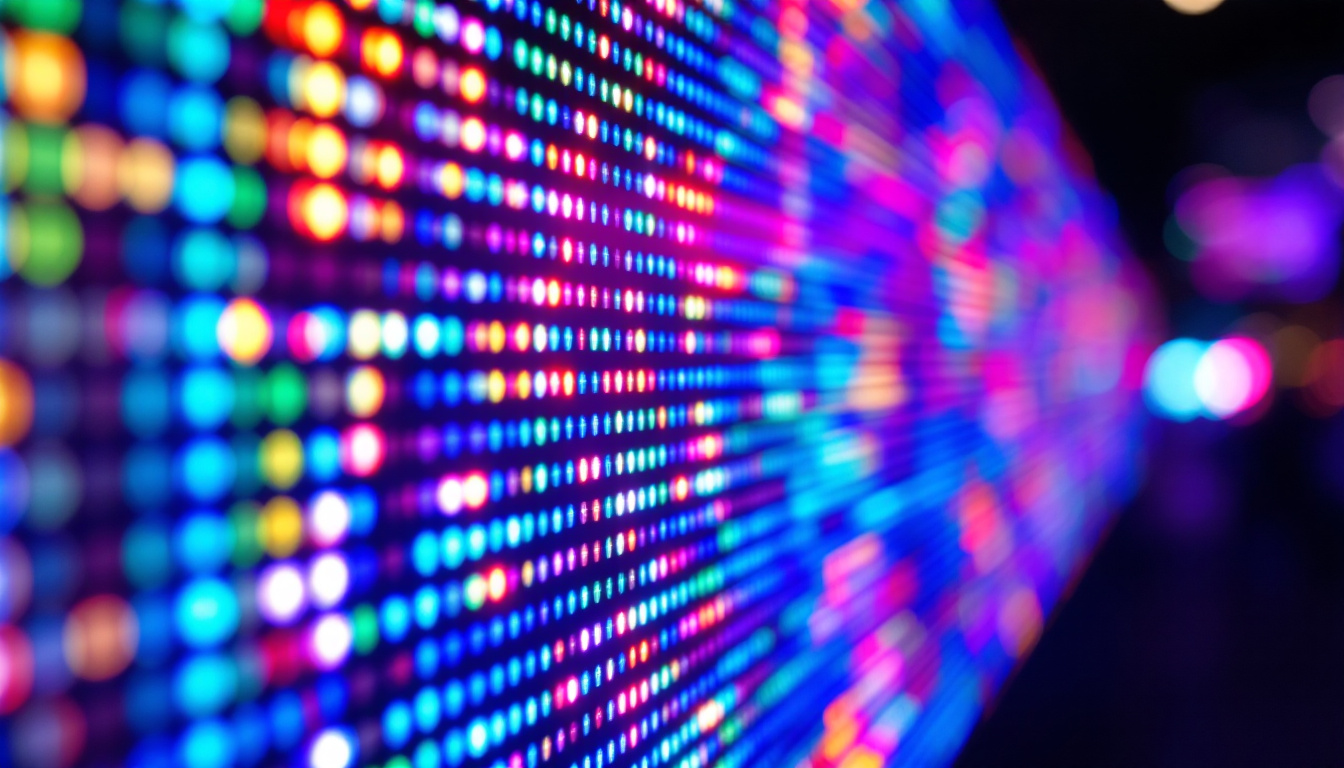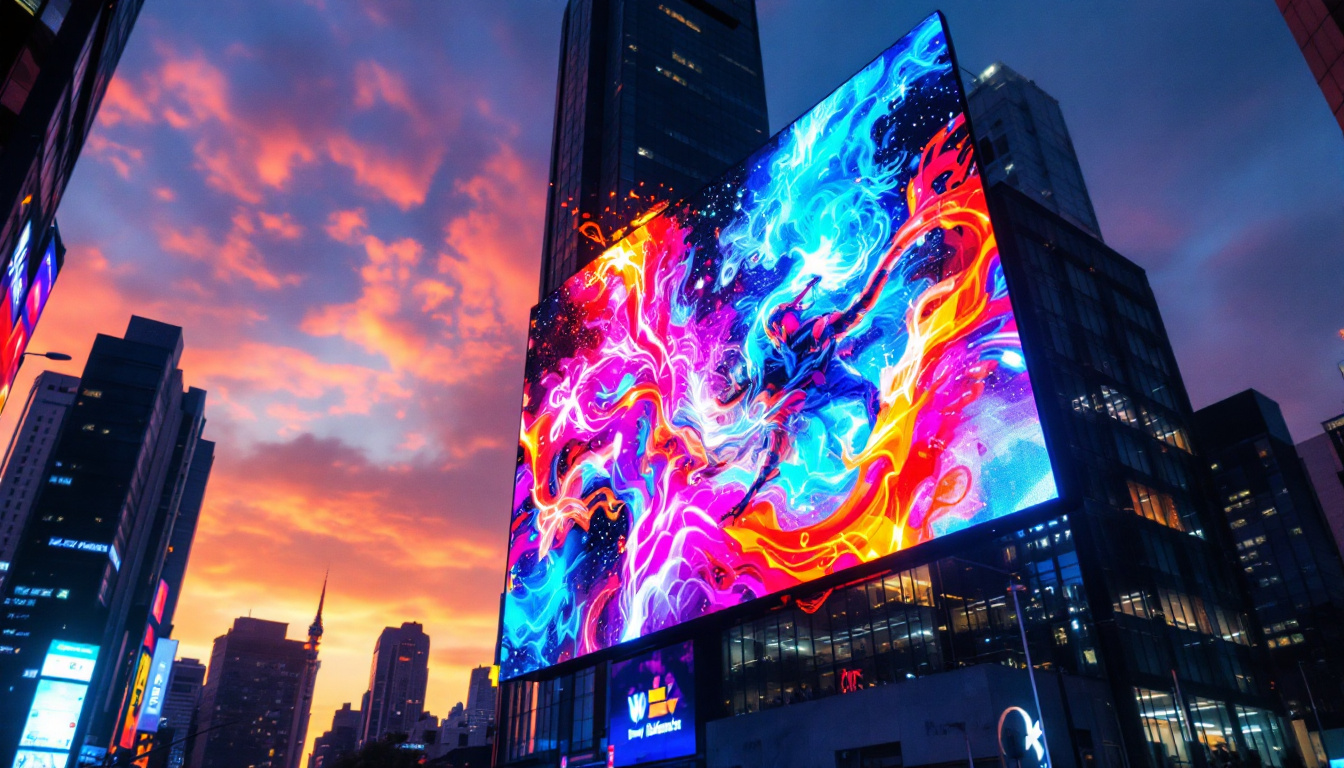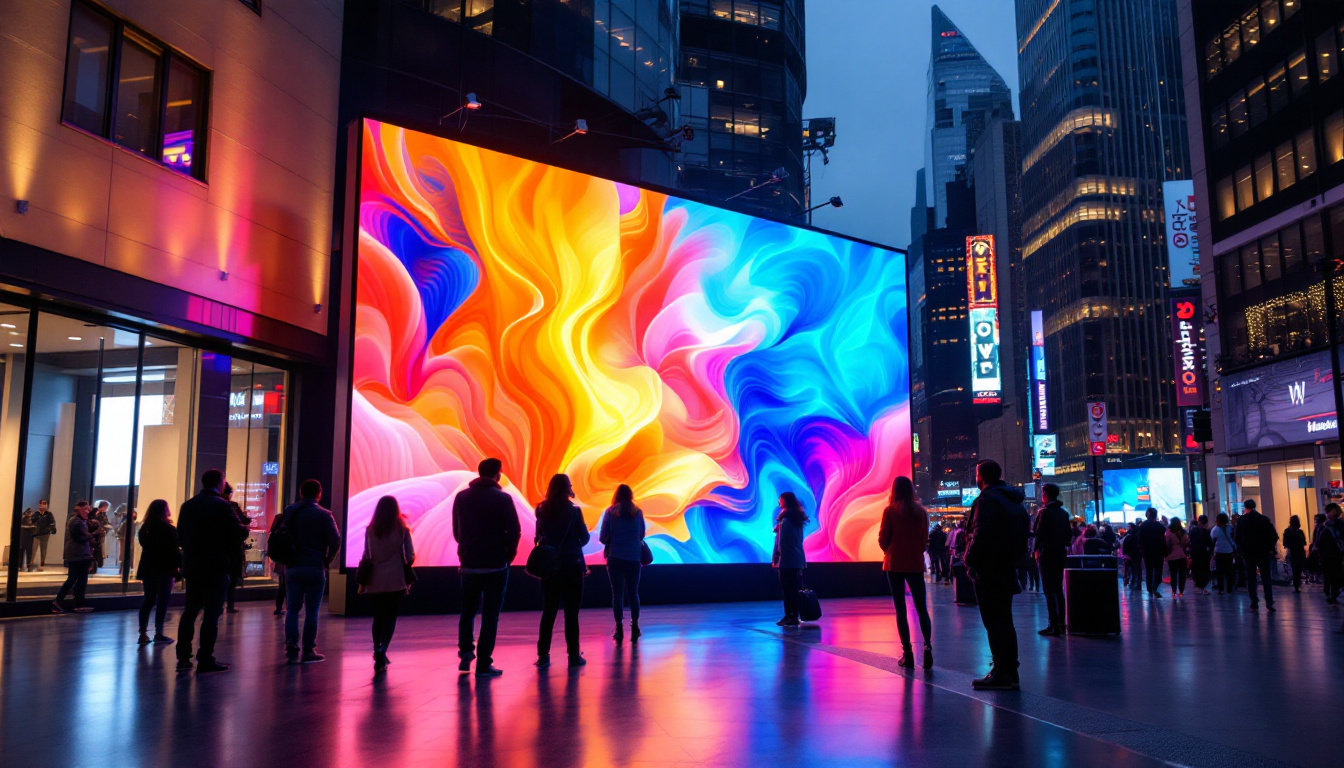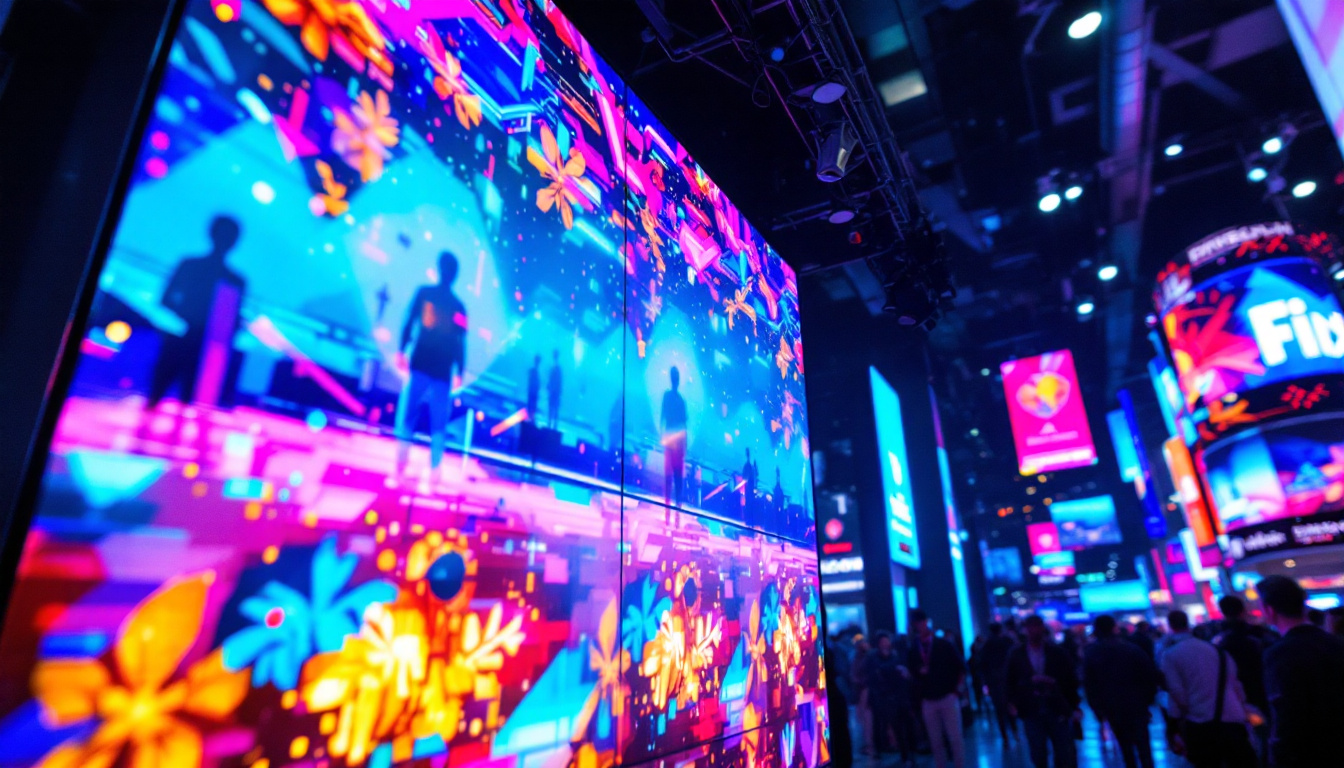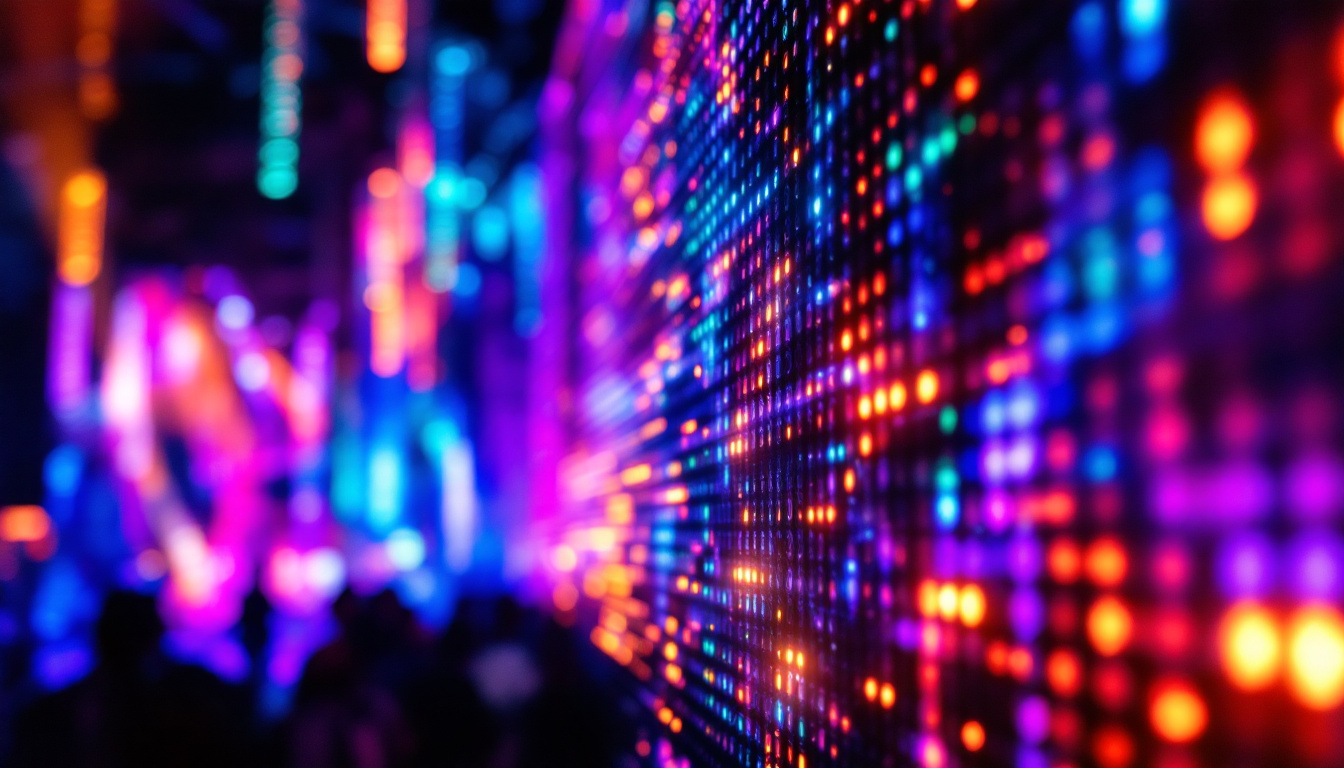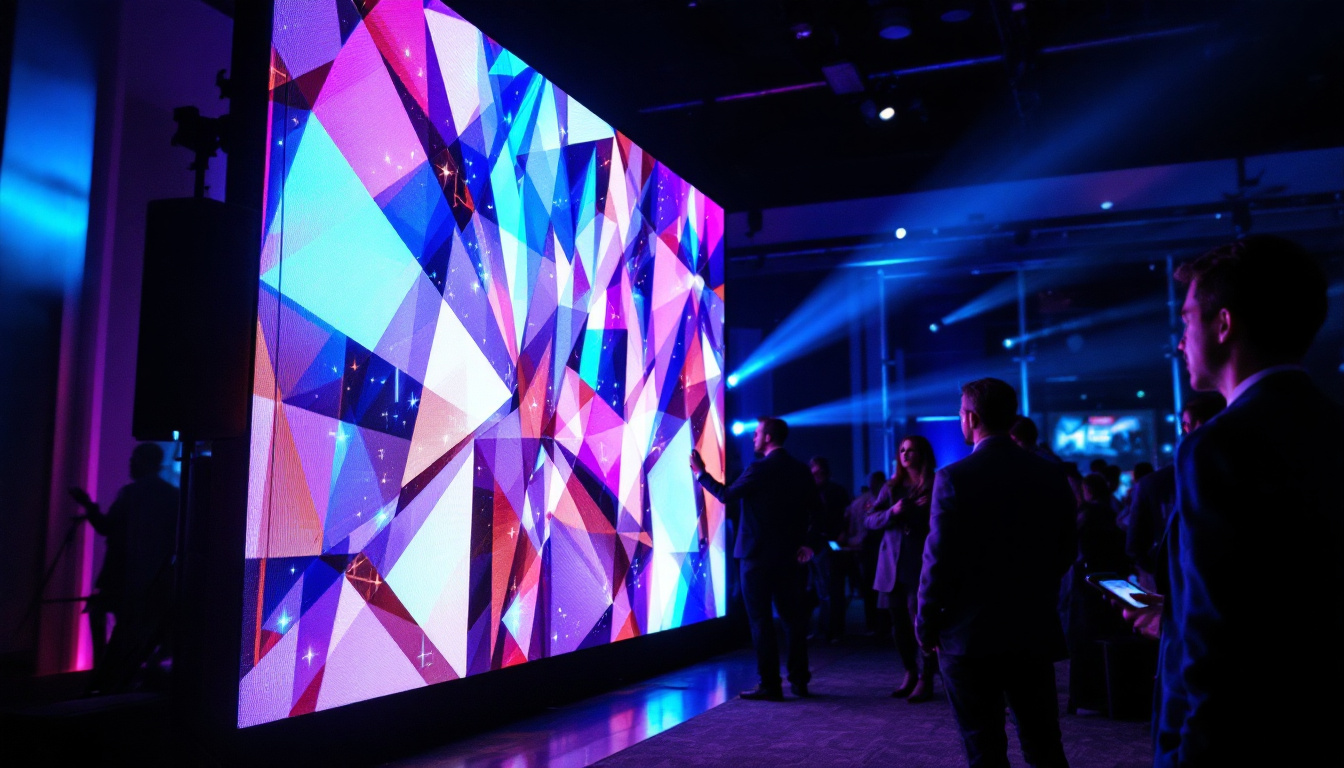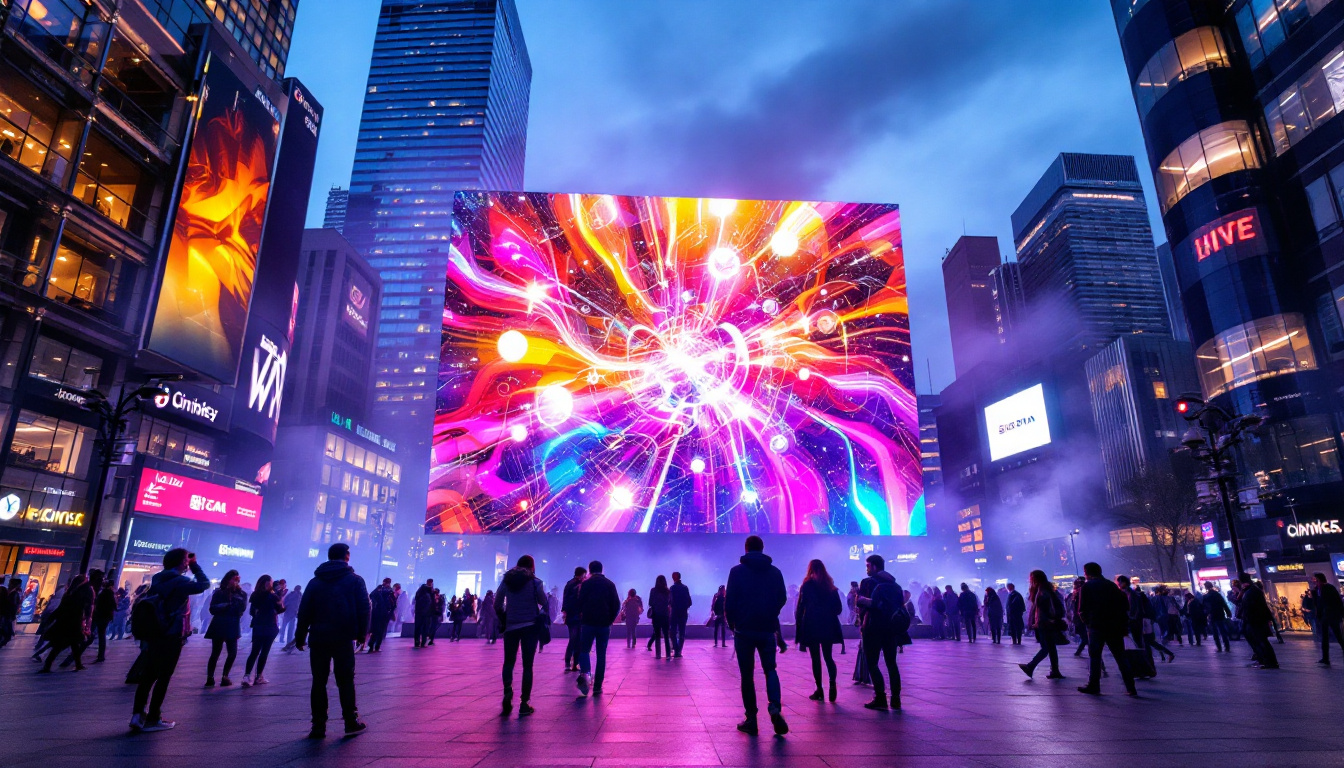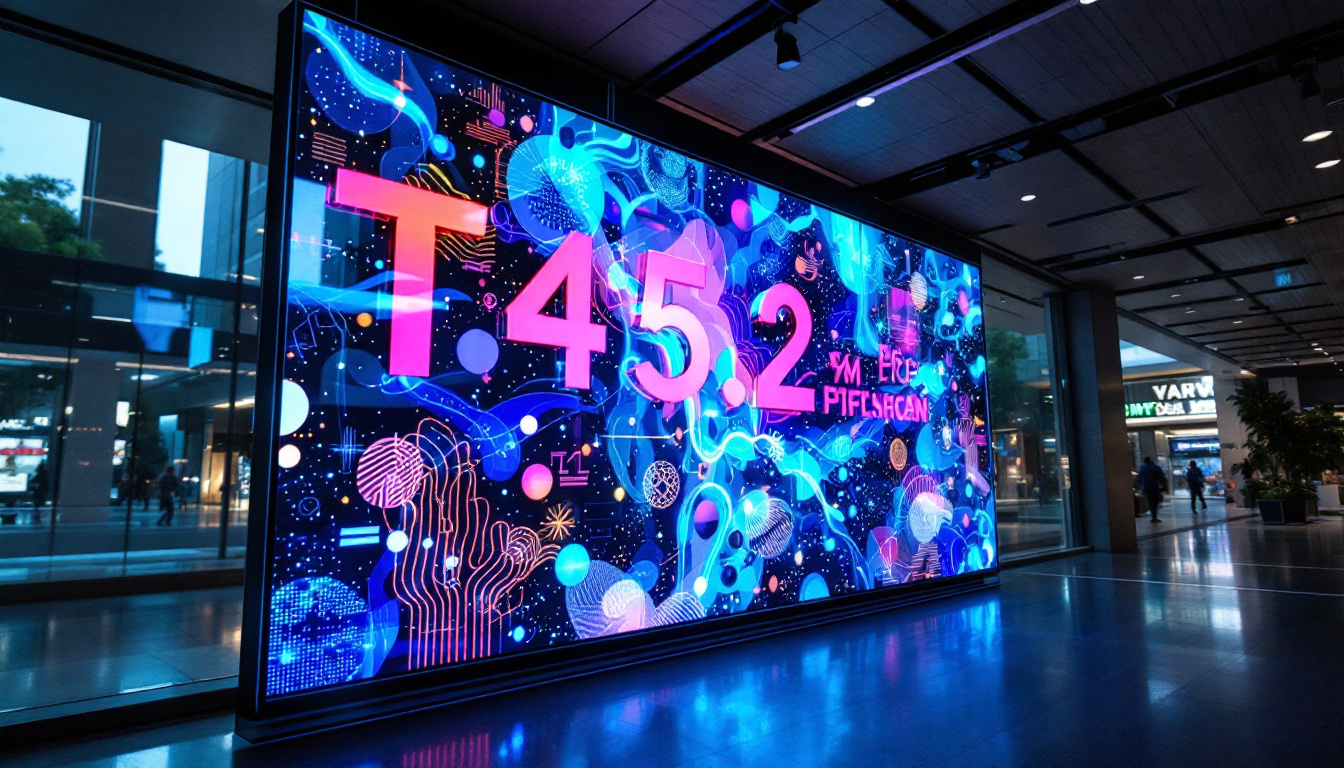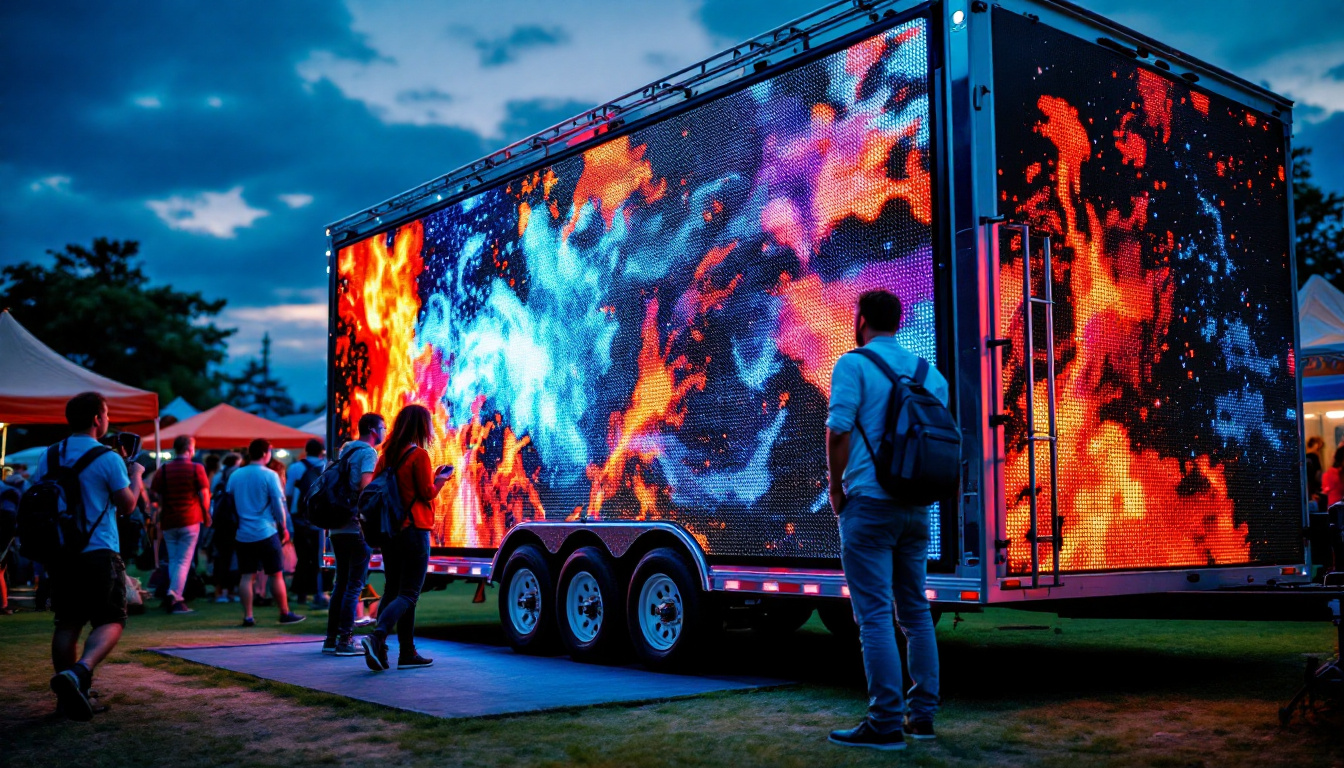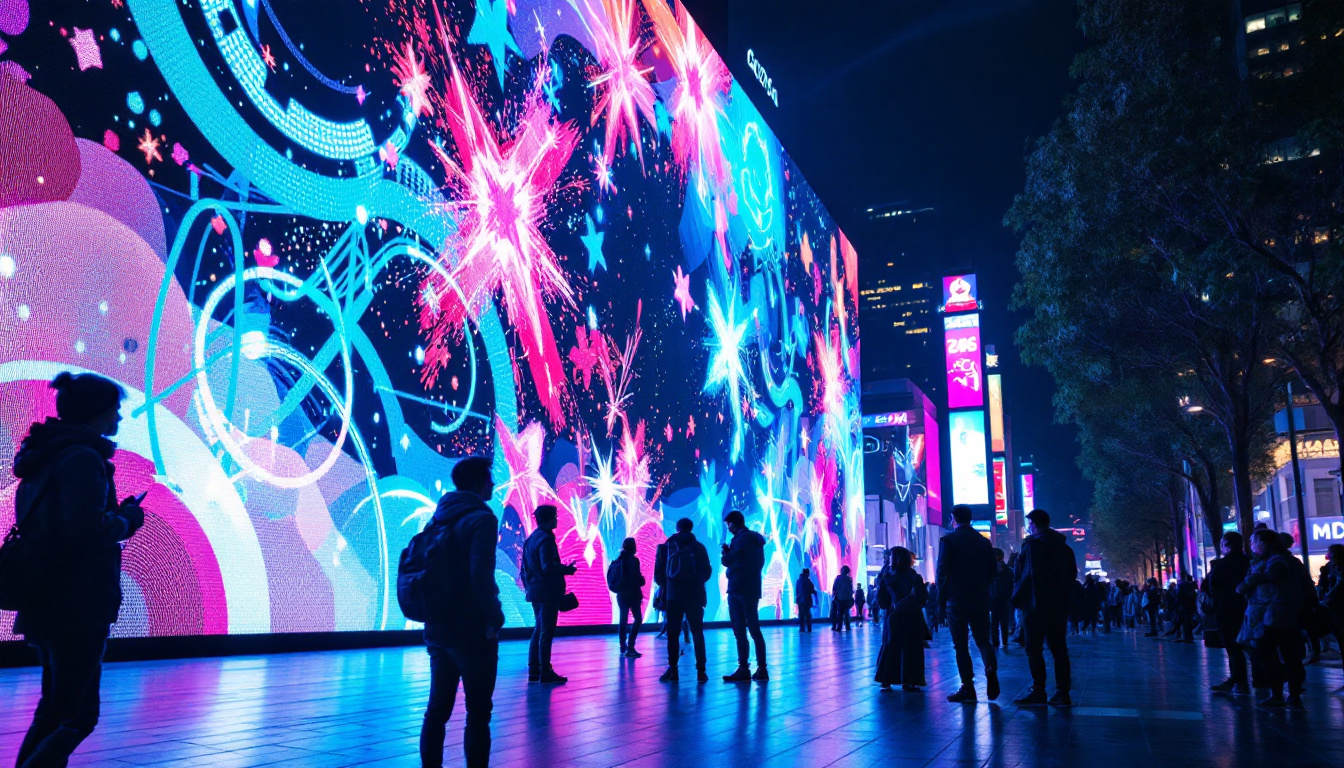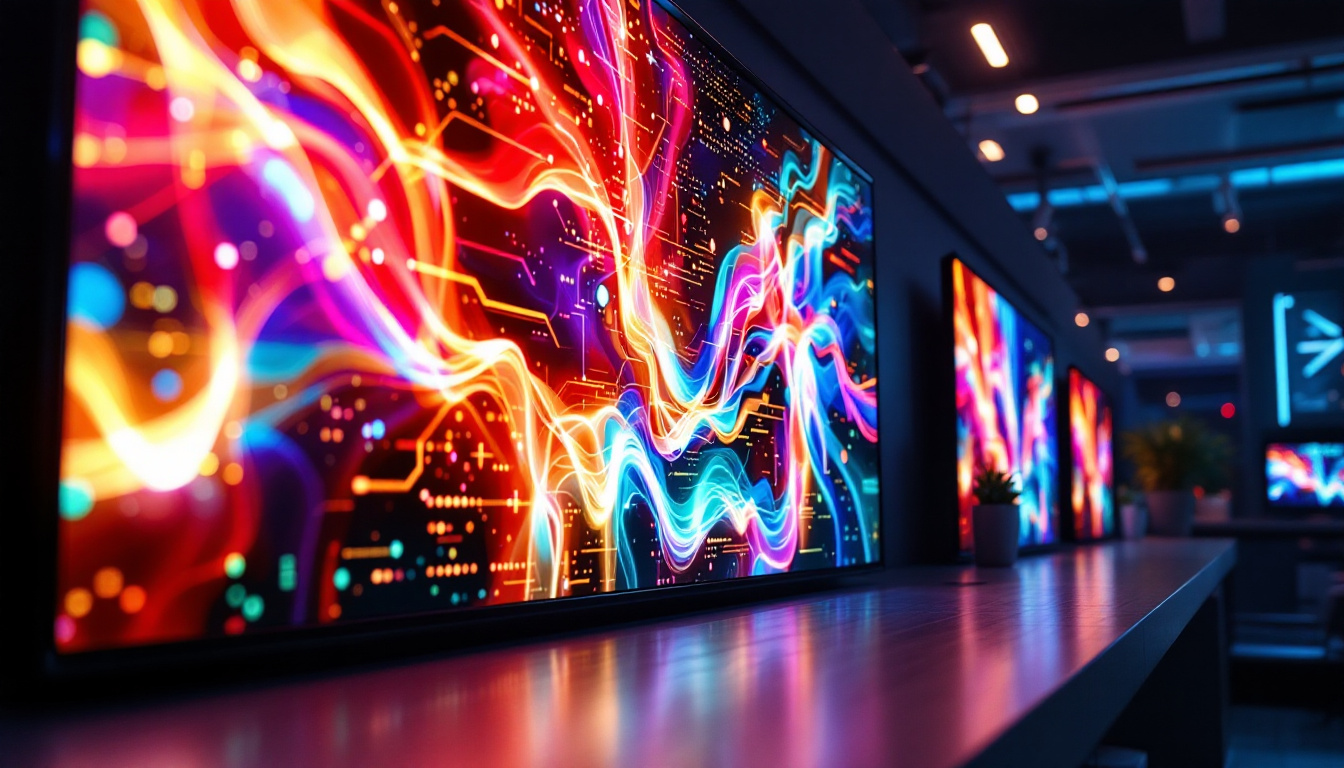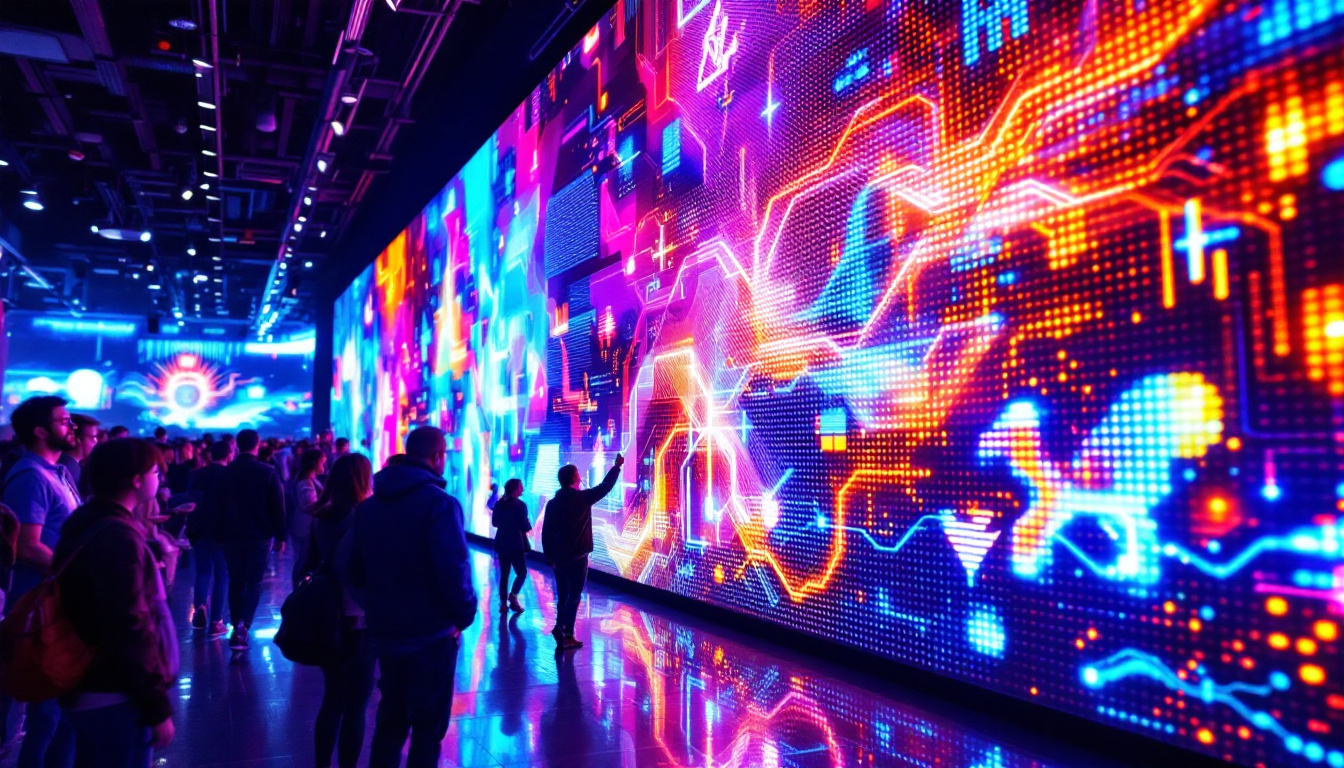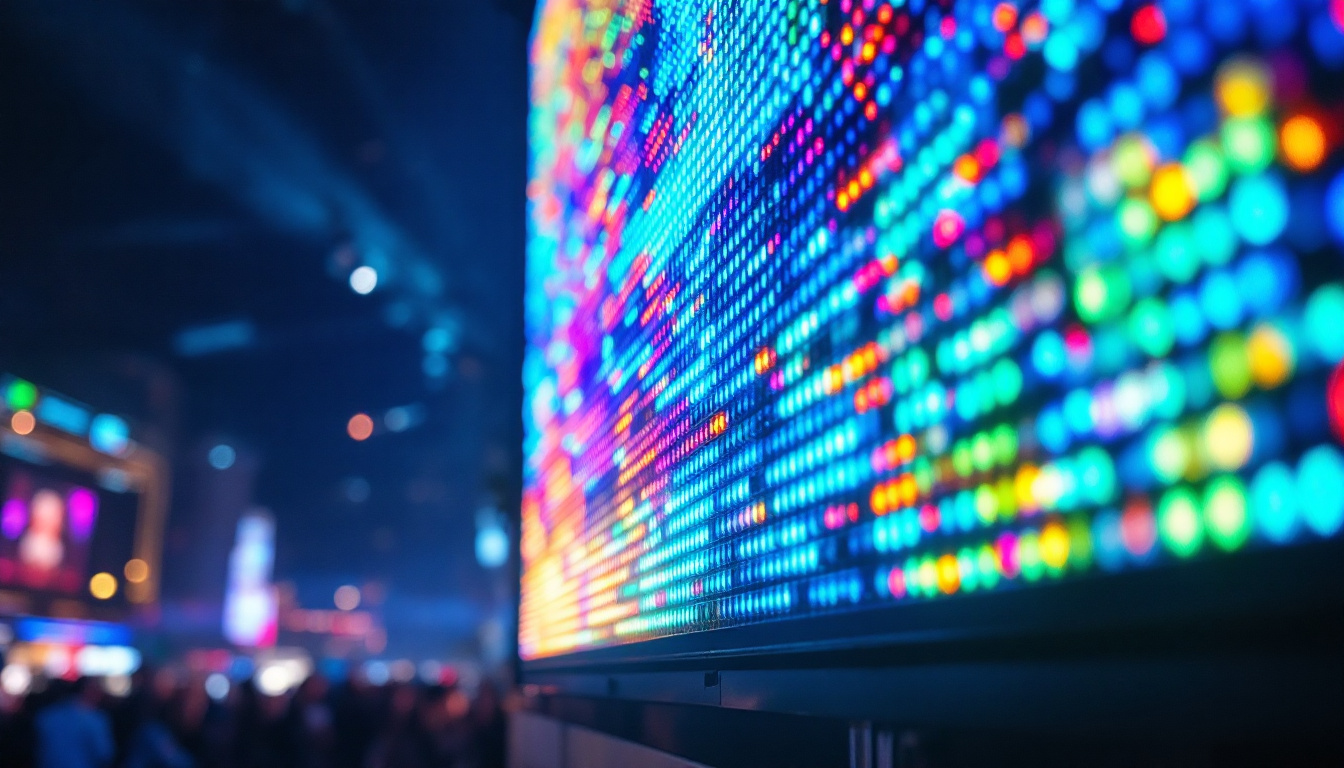In the world of digital displays, SMD LED technology has emerged as a game-changer. SMD, or Surface-Mounted Device, refers to a method of mounting electronic components directly onto the surface of printed circuit boards. This technology has significantly influenced how LED displays are designed and manufactured, leading to improved performance, versatility, and efficiency. This article delves deep into SMD LED displays, exploring their construction, advantages, applications, and future trends.
Understanding SMD LED Technology
To appreciate the significance of SMD LED displays, it’s essential to understand the underlying technology. Unlike traditional LED displays that utilize through-hole technology, SMD LEDs are mounted directly onto the surface of the PCB. This method allows for a more compact design and higher density of LEDs, resulting in brighter and more vibrant displays. The compact nature of SMD technology also facilitates more intricate designs, enabling manufacturers to create displays that can fit into tighter spaces without compromising on performance.
How SMD LEDs Work
SMD LEDs consist of multiple components, including the LED chip, lens, and the PCB. The LED chip emits light when an electric current passes through it, while the lens helps focus and diffuse the light. The PCB serves as the foundation that connects all components and provides electrical pathways. This integration of components not only improves the efficiency of light emission but also enhances thermal management, which is crucial for maintaining the longevity of the LEDs. Effective heat dissipation ensures that SMD LEDs can operate at optimal levels without overheating, thereby extending their operational lifespan.
The arrangement of SMD LEDs can vary significantly, with configurations that include RGB (Red, Green, Blue) setups for full-color displays. This flexibility in design allows for a wide range of applications, from simple indicators to complex video walls. Furthermore, the ability to control each color channel independently enables dynamic color mixing, which is particularly beneficial in creating stunning visual effects for advertising, entertainment, and artistic installations. The versatility of SMD LEDs has made them a popular choice in the burgeoning field of digital signage, where vibrant visuals are essential for capturing audience attention.
Types of SMD LEDs
There are several types of SMD LEDs, each designed for specific applications. The most common types include:
- Standard SMD LEDs: Typically used for basic lighting applications and indicators.
- High-Power SMD LEDs: Designed for applications requiring higher brightness, such as automotive lighting and outdoor displays.
- RGB SMD LEDs: Used for full-color displays, allowing for a wide spectrum of colors by mixing red, green, and blue light.
Each type has its unique advantages, making SMD LEDs suitable for various environments and use cases. For instance, high-power SMD LEDs are engineered to withstand harsh outdoor conditions, making them ideal for billboards and stadium displays that require visibility from great distances. On the other hand, standard SMD LEDs are often employed in consumer electronics, such as televisions and computer monitors, where energy efficiency and compactness are paramount. The continuous evolution of SMD technology also means that newer types are being developed, including smart SMD LEDs that can be integrated with IoT systems for enhanced functionality, such as remote control and automation.
Advantages of SMD LED Displays
SMD LED displays offer numerous benefits that make them a preferred choice for many applications. Their design and functionality contribute to their growing popularity in various industries.
Compact Size and Lightweight
One of the most notable advantages of SMD LED displays is their compact size. The surface-mounted design allows for a higher density of LEDs on the PCB, resulting in thinner and lighter displays. This characteristic makes SMD LED displays ideal for applications where space is limited, such as in retail signage or portable devices. Additionally, their lightweight nature facilitates easier installation and transportation, which is a significant advantage for event organizers and businesses that frequently change their display setups.
Improved Brightness and Color Quality
SMD LEDs are known for their superior brightness and color quality compared to traditional LED displays. The ability to produce vibrant colors and high contrast ratios enhances the visual appeal of the display, making it more engaging for viewers. This feature is particularly important in advertising and entertainment, where eye-catching visuals are crucial. Furthermore, SMD technology allows for better color mixing, ensuring that the display maintains its visual integrity even from wide viewing angles. This characteristic is essential for applications such as stadium screens or large outdoor displays, where audiences may be positioned at various distances and angles.
Energy Efficiency
Energy efficiency is another significant advantage of SMD LED technology. SMD LEDs consume less power than conventional lighting solutions, leading to lower energy costs and reduced environmental impact. This efficiency is particularly beneficial for large displays, such as billboards and digital signage, where energy consumption can be substantial. In addition, the longevity of SMD LEDs means that they require less frequent replacements, further contributing to sustainability efforts. With advancements in technology, many SMD displays now come equipped with smart energy management systems that optimize power usage based on real-time conditions, making them even more eco-friendly and cost-effective.
Applications of SMD LED Displays
The versatility of SMD LED displays allows them to be used in a wide range of applications across various industries. From advertising to entertainment and beyond, SMD technology has transformed the way visual content is presented.
Advertising and Digital Signage
In the advertising sector, SMD LED displays have become a staple for digital signage. Their ability to display dynamic content, such as videos and animations, captures the attention of passersby, making them an effective marketing tool. Retailers use SMD LED displays to showcase promotions, product launches, and brand messages, enhancing customer engagement. Moreover, the adaptability of these displays allows businesses to easily update content remotely, ensuring that their messaging remains fresh and relevant. This capability not only saves time but also reduces the costs associated with traditional print advertising, making SMD displays a cost-effective solution for businesses looking to maximize their advertising impact.
Event and Stage Lighting
SMD LED displays are widely used in concerts, festivals, and corporate events. Their ability to produce bright, colorful visuals makes them ideal for stage backdrops and lighting effects. Additionally, their lightweight design allows for easy installation and transportation, making them a favorite among event organizers. The flexibility in design and configuration means that these displays can be arranged in various shapes and sizes to create immersive environments that enhance the audience’s experience. Furthermore, the integration of SMD LED technology with advanced lighting systems allows for synchronized light shows that can elevate performances to a whole new level, captivating audiences and creating memorable moments.
Transportation Displays
Public transportation systems utilize SMD LED displays for real-time information dissemination. Bus stops, train stations, and airports employ these displays to provide passengers with updates on schedules, delays, and other important information. The high visibility and clarity of SMD LED displays ensure that information is easily accessible to travelers. In addition to displaying schedules, these screens can also be programmed to show emergency alerts, safety instructions, and advertisements, making them multifunctional tools in busy transit environments. The durability and weather resistance of SMD LED technology further enhance their suitability for outdoor installations, ensuring that they remain operational and effective in various weather conditions, thereby improving the overall travel experience for commuters.
Challenges and Considerations
While SMD LED displays offer numerous advantages, they are not without challenges. Understanding these challenges is crucial for manufacturers, designers, and end-users alike.
Heat Management
One of the primary challenges associated with SMD LED technology is heat management. High-density LED configurations can generate significant heat, which, if not properly managed, can lead to reduced performance and lifespan. Effective thermal management solutions, such as heat sinks and ventilation systems, are essential to ensure the longevity of SMD LED displays.
Cost Factors
Although the cost of SMD LED technology has decreased over the years, initial investment can still be a consideration for some businesses. The price of high-quality SMD LEDs and the associated manufacturing processes can be higher than traditional display technologies. However, the long-term benefits, including energy savings and reduced maintenance costs, often outweigh the initial expenditure.
The Future of SMD LED Technology
The future of SMD LED technology looks promising, with ongoing advancements that continue to enhance performance and expand applications. As technology evolves, several trends are emerging that will shape the future landscape of SMD LED displays.
Integration with Smart Technology
As the world becomes increasingly interconnected, the integration of SMD LED displays with smart technology is on the rise. Smart displays equipped with sensors and connectivity features can provide real-time data, enabling dynamic content updates based on user interactions and environmental factors. This integration opens up new possibilities for personalized advertising and interactive experiences.
Advancements in Color and Brightness
Research and development in LED technology are leading to advancements in color accuracy and brightness. Future SMD LED displays are expected to achieve even higher levels of brightness while maintaining energy efficiency. This progress will enhance the visual experience, making displays more impactful in various lighting conditions.
Sustainability Initiatives
With growing concerns about environmental sustainability, the LED industry is focusing on developing eco-friendly solutions. Future SMD LED displays will likely incorporate sustainable materials and manufacturing processes, reducing their carbon footprint. Additionally, advancements in recycling technologies will ensure that end-of-life displays can be processed responsibly.
Conclusion
SMD LED technology has revolutionized the world of digital displays, offering a range of advantages that cater to various applications. From advertising to event lighting and transportation, SMD LED displays have become integral to modern communication and entertainment. Despite the challenges, the future of SMD LED technology is bright, with ongoing innovations poised to enhance performance and sustainability. As industries continue to embrace this technology, the possibilities for SMD LED displays are limitless, paving the way for a more vibrant and connected world.
Discover the Future of Visual Engagement with LumenMatrix
Ready to elevate your visual communication and captivate your audience like never before? Explore LumenMatrix’s comprehensive range of LED display solutions, where innovation meets functionality. Whether you’re seeking an Indoor LED Wall Display for a corporate event, an Outdoor LED Wall Display for impactful advertising, or any of our specialized solutions like Vehicle LED Displays and LED Sports Displays, LumenMatrix has you covered. Embrace the future of digital signage with our cutting-edge technology designed to make your brand shine. Check out LumenMatrix LED Display Solutions today and join the revolution in visual storytelling.

